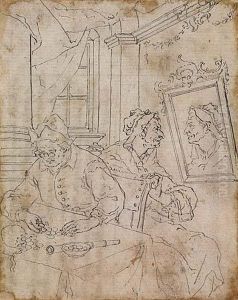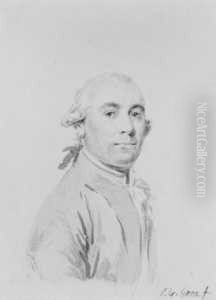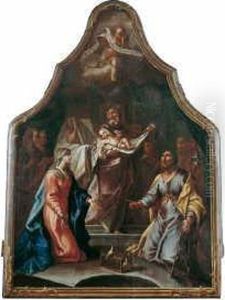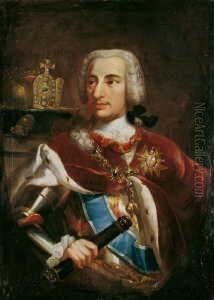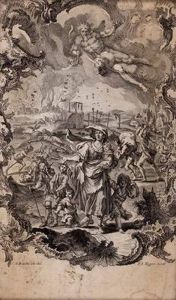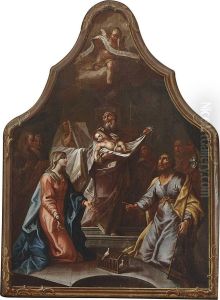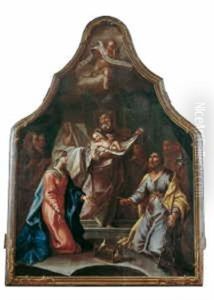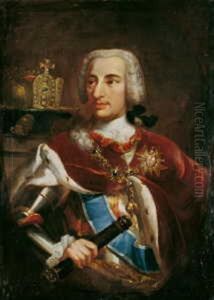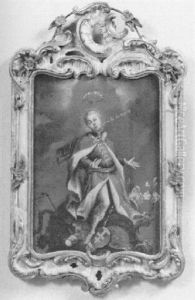Gottfried Bernhard Goetz Paintings
Gottfried Bernhard Goetz was a notable figure in 18th-century European art, particularly renowned for his contributions as a medallist. Born in 1708, Goetz's work spanned the realms of art and numismatics, a field that involves the study of currency, including coins, tokens, paper money, and related objects. Through his craftsmanship and artistic vision, Goetz played a significant role in the development of medallion art during his era, an epoch marked by a rich interplay between the arts and the emerging ideals of the Enlightenment. Throughout his career, Goetz developed a distinctive style that set his work apart from his contemporaries. His approach to medal-making was innovative, integrating aesthetic beauty with the technical precision required in numismatics. This blend of qualities made his medallions highly sought after, not only for their monetary and historical value but also for their artistic merit. Goetz's contributions to the field were not limited to his creations; he also influenced the practices and techniques used in medallion making, leaving a lasting legacy that would benefit future generations of artists in the numismatic community. He passed away in 1774, but his work continues to be celebrated for its influence on the art of medallion making and its reflection of the cultural and intellectual currents of his time.
